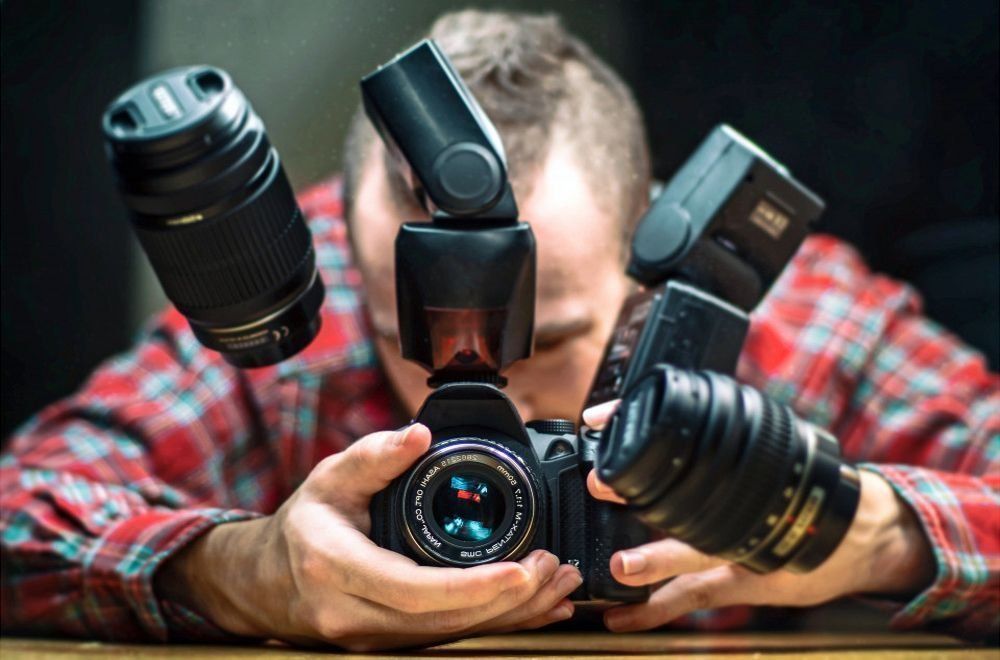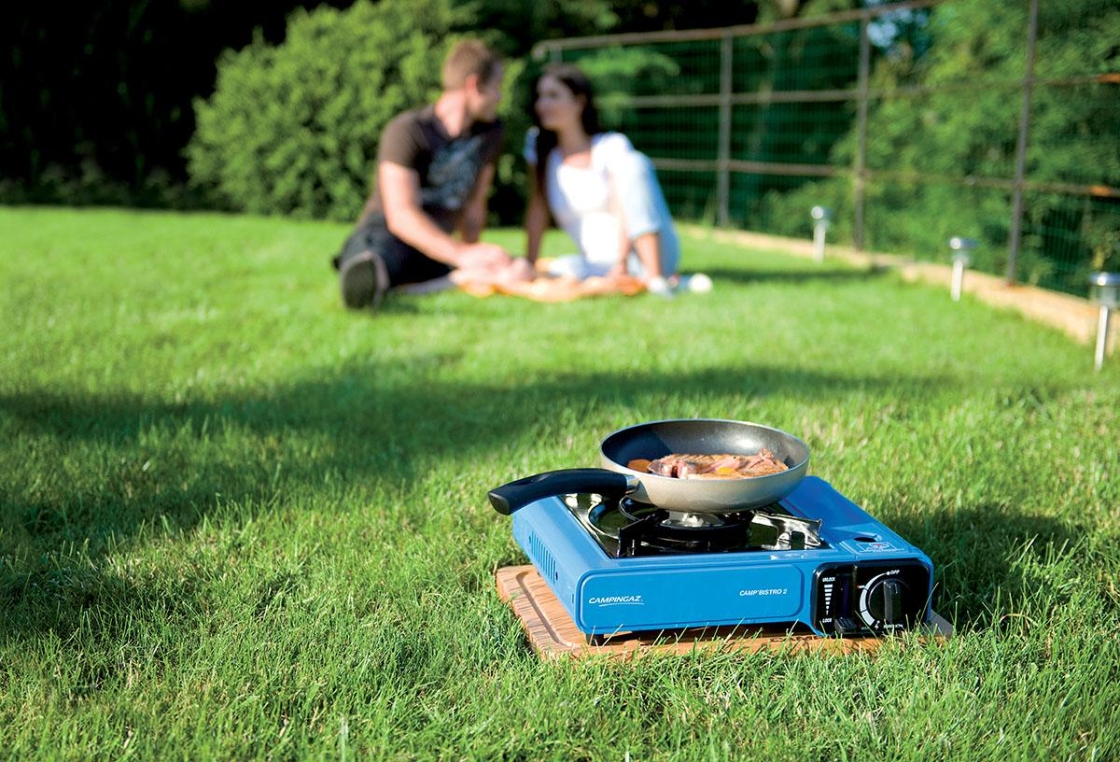Cheap and bright. ZTE Blade A530 - advantages and disadvantages
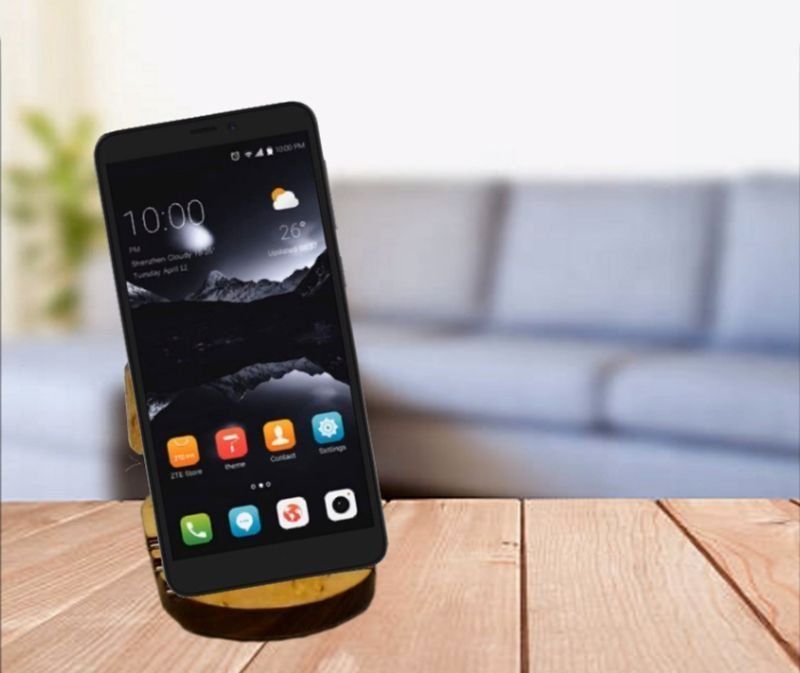
Just a few years ago, we literally knew nothing about Chinese mobile phone brands, but for years, companies such as Huawei, Meizu, Xiaomi enjoy great success in our country. They proved to us that Chinese smartphones are not "disposable" pieces of electronic junk that should be sold by weight, but good quality at a price that compares them favorably with popular brands such as Apple or Samsung.
Popular models of their phones are firmly rooted on the shelves of our stores. ZTE is also one of the best Chinese manufacturers. And not so long ago, a new budget smartphone of the famous Chinese came to the Russian market.
Is ZTE's new Blade A530 worthy of taking its place in the low-end phone market segment? Let's figure it out.
Content
Equipment
The box contains:
- The ZTE Blade A530 phone itself;
- Charger;
- USB cable;
- Headphones for 3.5 mm jack;
- User's manual;
- Warranty card.
Design and display
The phone came to us from China in a silver plastic case, the size of which is 146.4 × 69.2 × 8.5 mm. The plastic case, of course, does not add reliability to the phone, but it should not break from a couple of falls either. On the right are the volume buttons and the unlock key. At the top of the screen, of course, there is a speaker and a front camera, as in fact, in all phones.
The smartphone has a fairly large HD + (1440 × 720) LCD display, with a diagonal of 5.45 inches. The aspect ratio of the screen is 18:9. Thanks to this, the screen looks quite wide. Actually, this is what it is, since it occupies as much as 82% of the hull area. The screen has rather thin walls, which provides a wide viewing angle, while the S-IPS matrix provides excellent color reproduction.
An interesting feature of the display is the ability to split the screen into 2 parts and run 2 applications at the same time
Let's take a closer look at the matrix. The screen matrix is designed using S-IPS technology. Only S-IPS matrices can produce colors that are so soft and pleasing to the eye, which also look very natural. They can only be compared with high quality CRT monitors. Naturally, displays with S-IPS matrix are deprived of all the shortcomings of these monitors. It is these matrices that are used in LCD monitors designed to work with graphics.

Main characteristics
We invite you to take a look at the specifications of the phone
| General characteristics | |
|---|---|
| 2G technology | 850/900/1800/1900 |
| 3G technology | 850/900/2100 |
| 4G technology | LTE FDD B1/B3/B5/B7/B8/B20 LTE TDD B38 |
| Standard battery capacity | 2600 mAh |
| Bluetooth | 4.1 |
| Available colors | blue/grey |
| Communication generation | 4G LTE |
| Built-in GPS module | Yes |
| Headphone jack, mm | 3.5 |
| Housing material | Plastic |
| Operating system | Android 8.1 Oreo |
| The size | 147.8*69.2*8.95 |
| Working with multiple SIM cards | Yes |
| SIM generation | Nano SIM |
| Number of SIMs | 2 |
| USB interface | Micro USB 2.0 |
| WiFi standard | 2.4GHz 802.11g/b/n |
| Camera | |
| photo flash | Yes |
| Front camera, MP | 5 |
| Main camera, MP | 13 |
| Number of cameras | 2 |
| Display | |
| Screen diagonal, inch | 5.45 |
| Matrix type | S-IPS |
| Configuration | |
| Built-in memory | 16 GB |
| Memory card support | Micro SD |
| RAM | 2 GB |
| Maximum memory card size | 128 GB |
| Peculiarities | |
| Sensors | Proximity Sensor, Gyroscope, Accelerometer, Light Sensor |
| satellite navigation | GPS |
Memory
The amount of RAM - 2 GB - is what is needed for this price segment, because 1 GB in 2018 does not look solid at all. The phone has 16 GB as standard. There is a slot for a microSD card up to 128 GB, which is not combined with a SIM card slot. So the phone can carry the proud title of Dual sim without any complaints. Also on sale should be a version of the ZTE Blade A530 3/32 GB.
CPU
This model uses MediaTek MT6739, which has 4 Cortex-A53 cores of 64 bits each on one chip. As a result, the maximum clock frequency of this chip is 1.5 GHz.
To play graphics, the PowerVR GE8100 video accelerator with a maximum frequency of 570 MHz is used.It was chosen for a reason, because it supports screens with resolutions up to 1440x720. The processor was released on September 27, 2017 and supposedly for this phone.
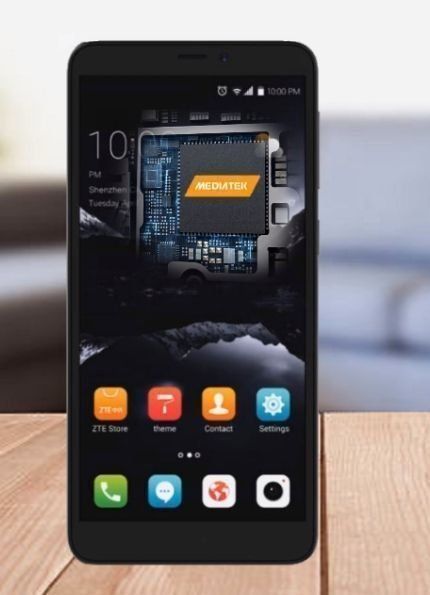
Performance
You can't exactly call this processor fast. According to the AnTuTu tests, he scored a maximum of 38,000, which is completely ridiculous if you remember what year it is. It is clearly not designed for active games, and ZTE did not set such a goal for themselves when they assembled it. He will pull the standard software software, but you should not expect much from him.

Battery
But the battery here is relatively good. Although the battery capacity is only 2600 mAh, it has well-implemented energy-saving features. All this together definitely provides the phone with at least a day of autonomy.
Energy saving goes according to the following algorithm: The device analyzes the frequency of using phone applications, selects those that are used less often than others, but at the same time consume a lot of energy, and closes them.
The system also records the time of inactivity, and if nothing happens for more than a specified period, it puts the phone into sleep mode.
Nothing particularly original, but it has always worked and will work now.
Camera
Quite an interesting situation turned out with the camera. Initially, the manufacturer, apparently to further reduce the cost, planned to put a 5 MP rear camera and a 2 MP front camera. However, later, apparently, he decided that this would already be quite a bust. As a result, the phone received 13 MP main and 5 MP front
The rear camera has autofocus, backlight and HDR (Hight Dynamic Range) mode. This mode for photographing objects with different brightness ranges allows you to take high-quality pictures by superimposing images with different exposures on top of each other.
The front camera can blur the background in real time to focus on the face of the photographer. Due to this feature, portrait photos should be sharper and clearer.
Both cameras support night mode, and the front one has a face retouching mode, in which, with the help of a set of certain functions, you can slightly transform your selfies.
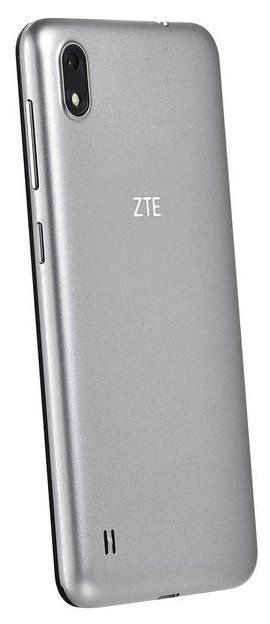
Operating system
Visual part
The software of this mobile phone is implemented on Android 8.1 Oreo OS, which is the first addition to version 8.0.
In this global update, named after the famous cookie, there are quite a few visual innovations regarding user interaction with the interface. Basically, they are invisible and focused on increasing the level of security of the device.
Of the visible innovations, it is worth noting a few especially striking:
- The Play Music panel has learned to change the color of its background and text depending on the design and color scheme of the album cover.
- Not-so-important notifications in the shade are now folded into a thin strip, giving more space to the more important ones.
- The color of the curtain itself also changed, it became light.
- The function switch rows change automatically according to the brand of the phone.
- Notification timer. Now for the notifications themselves, you can set a display timer. In the settings, you can set the time for which notifications will disappear.You can delay the display by 15 minutes, 1 hour, 2 hours, and 3 hours.
- Categories of alerts. Now notifications from applications are displayed depending on the category to which they belong. You can see these categories if you move the notification to the right and click on the gear icon. Here you can also configure them.
- "Picture in Picture". One of the most interesting innovations. It allows you to minimize the media being played into a small window that is displayed on top of all windows on the desktop. This feature allows you to work with applications without looking up from watching the video.
- "Smart" text selection. Pretty useful context menu tool. It allows the system to analyze the selected piece of text and immediately apply a suitable sentence to it. For example, by highlighting an address, you can immediately open it in google maps or Yandex maps, and by highlighting a phone number, you can immediately call without copying it to the “phone”.
- Updated emoji. Android0 finally has normal emoji. Now they don't look like they've been properly shoveled on top like they did in version 7.1.
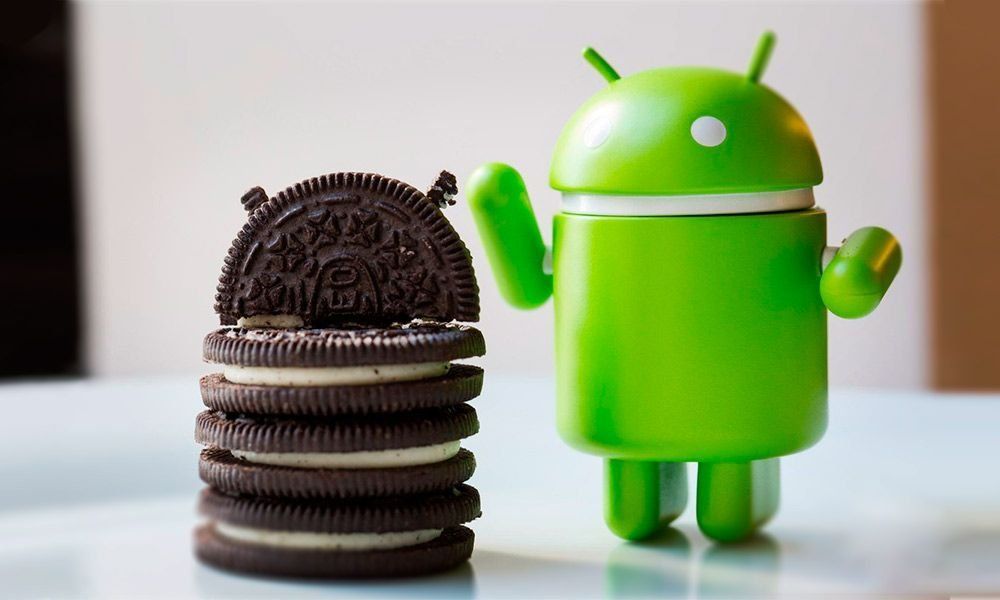
Safety
Most of the OS changes did not affect the visual component. Many of the changes in Oreo are related to the security of the phone. Let's take a look at them.
- "Google play protection" is a new service designed to protect the browser, scan applications, and also protect the smartphone from theft. In fact, it simply combines the capabilities of Verify apps and Android Device manager.
- Permission to install insecure software. Previously, this permission was issued by one switch in the settings.In the new system, this process is more complicated, and you will have to issue permission for each tool with which you try to install programs without using the Google Play service.
- Now the system itself analyzes programs running in the background and selects those that look suspicious in order to draw the user's attention to them.
- You can password protect "developer" features.
- It is now almost impossible to get information about the device and registered user accounts without his permission.

Useful Features
ZTE was going to implement an NFC support function in the phone, using which you can use the phone as a contactless bank card for payment or, for example, as a pass.
There were also rumors about the possible presence of a fingerprint scanner, but the version for the Russian market, apparently, will not have these two interesting features. It's a pity, making NFC mode would be nice.
So, let's take a look at what was actually implemented.
DualSIM—DualLTE
The phone's compatibility with 4G+ networks gives it access to VoLTE technology (Voice over LTE/voice over LTE). You can use one SIM card for 4G + Internet, and the second for communication via VoLTE.
This technology is already quite developed in Russia and almost every provider provides access to 4G communication technology.
Its advantages over the usual 3G communication format of UMTS networks and even more so 2G GSM are undeniable:
- No conflict between calls and internet usage. You can talk and at the same time view the path on the navigator, surf the Internet or read social networks.
- Connection quality. You hear the voice of the interlocutor clearly and without interference, as if talking face to face.
- Almost instant dialing. Connection time is usually 2-4 seconds.
Calls via VoLTE do not differ in cost from calls via less advanced networks, do not consume Internet traffic, and in general, except for the quality of communication, they do not differ from calls via 2G and 3G networks.
Z—backup
An incredibly useful feature that allows you to transfer all the information from your old phone to a new one. Saying everything, I mean absolutely everything: photos, videos, music, even contacts.
The presence of such a function in the state employee is quite unusual and a very pleasant surprise. It will save you a lot of time that would have taken the routine and tedious transfer of files from your old phone.
Price
Now let's look at how much this model, which calls itself a budget smartphone, costs.
At the time of release, August 24, 2018, the approximate price in stores is 7,500 rubles for Russia. For other CIS countries, such as Belarus and Kazakhstan, prices are not yet known.
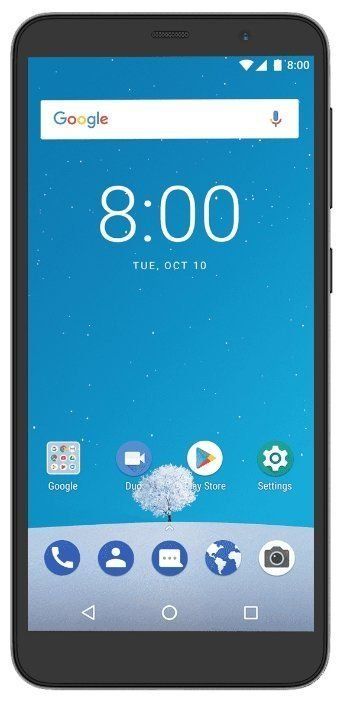
Advantages and disadvantages
Since the phone has just been released, there are practically no reviews that allow us to compile a detailed description of its pros and cons, so let's try to form our opinion based on the information already available
- First of all, this is the price. For a price of 7500, this phone has some pretty impressive specs;
- The phone has an excellent display with good color reproduction and wide viewing angles;
- Long-lasting battery with a good energy saving system;
- Access to 4G+ networks;
- The Z-backup program, which allows you to safely transfer information from an old phone to a new one.
- The plastic case is a clear disadvantage of the phone, and the assembly of cheap smartphones also often leaves much to be desired.Therefore, you should be careful with it.
- Weak processor. Despite the novelty, with fresh applications of 2018, he copes with difficulty.
- Far from the best camera. Having a standard set of parameters, without the ability to even adjust the ISO or white balance, and cheap optics, you can’t take particularly good photos.
conclusions
In conclusion, it should be said that if you are not going to play heavy 3D games with very good graphics on this phone or try yourself as a professional photographer, then this option may well be considered.
For light applications, Internet surfing, social networks, correspondence and watching videos, it is well suited. Especially for watching videos given its wonderful display.
It definitely deserves its place in the market niche it claims to be, and if you're looking for an inexpensive smartphone for work, it's worth considering as an option.
new entries
Categories
Useful
Popular Articles
-

Top ranking of the best and cheapest scooters up to 50cc in 2022
Views: 131656 -

Rating of the best soundproofing materials for an apartment in 2022
Views: 127697 -

Rating of cheap analogues of expensive medicines for flu and colds for 2022
Views: 124524 -

The best men's sneakers in 2022
Views: 124041 -

The Best Complex Vitamins in 2022
Views: 121945 -

Top ranking of the best smartwatches 2022 - price-quality ratio
Views: 114983 -

The best paint for gray hair - top rating 2022
Views: 113400 -

Ranking of the best wood paints for interior work in 2022
Views: 110326 -

Rating of the best spinning reels in 2022
Views: 105334 -

Ranking of the best sex dolls for men for 2022
Views: 104373 -

Ranking of the best action cameras from China in 2022
Views: 102221 -

The most effective calcium preparations for adults and children in 2022
Views: 102015
